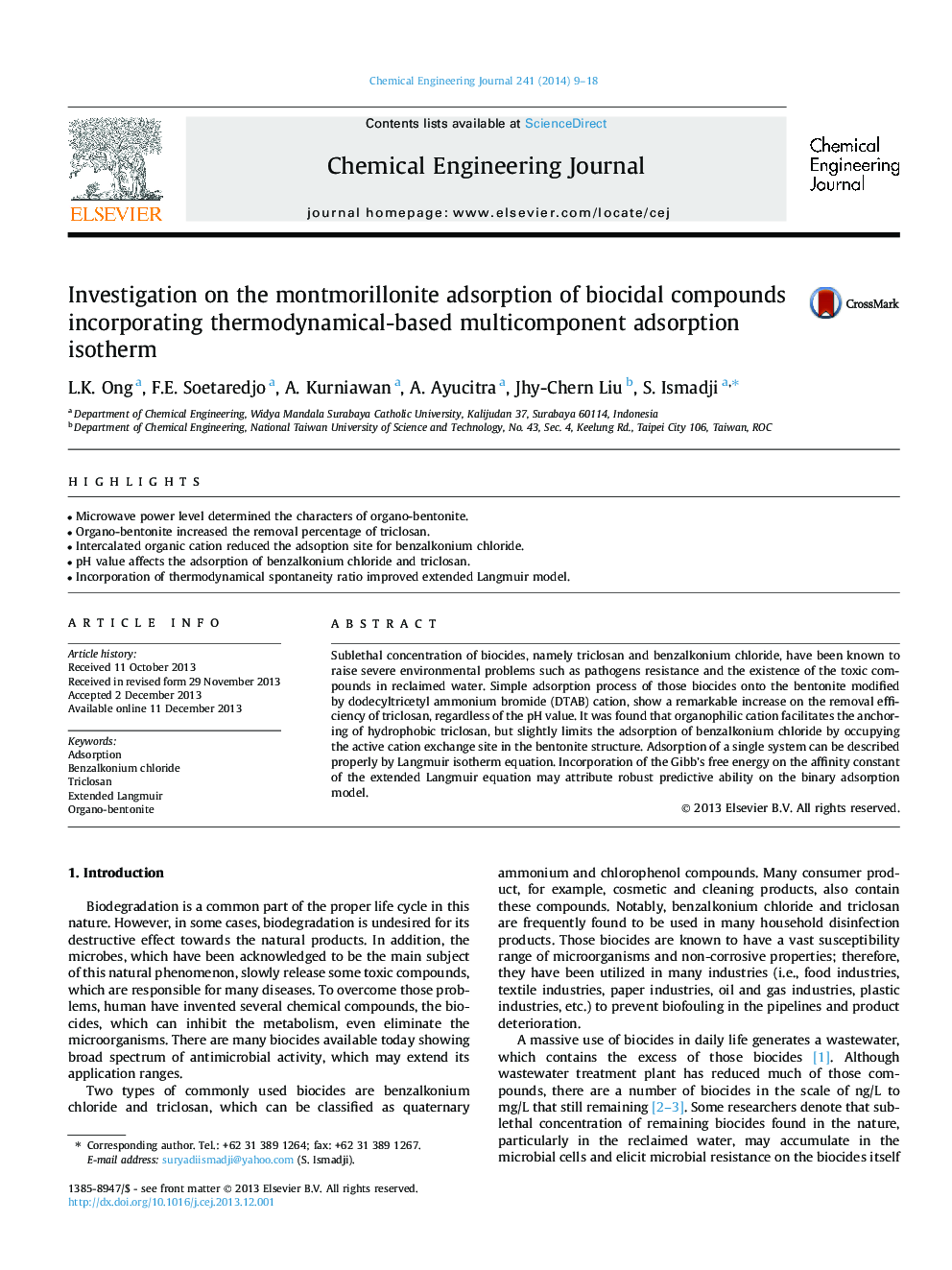| Article ID | Journal | Published Year | Pages | File Type |
|---|---|---|---|---|
| 147563 | Chemical Engineering Journal | 2014 | 10 Pages |
•Microwave power level determined the characters of organo-bentonite.•Organo-bentonite increased the removal percentage of triclosan.•Intercalated organic cation reduced the adsoption site for benzalkonium chloride.•pH value affects the adsorption of benzalkonium chloride and triclosan.•Incorporation of thermodynamical spontaneity ratio improved extended Langmuir model.
Sublethal concentration of biocides, namely triclosan and benzalkonium chloride, have been known to raise severe environmental problems such as pathogens resistance and the existence of the toxic compounds in reclaimed water. Simple adsorption process of those biocides onto the bentonite modified by dodecyltricetyl ammonium bromide (DTAB) cation, show a remarkable increase on the removal efficiency of triclosan, regardless of the pH value. It was found that organophilic cation facilitates the anchoring of hydrophobic triclosan, but slightly limits the adsorption of benzalkonium chloride by occupying the active cation exchange site in the bentonite structure. Adsorption of a single system can be described properly by Langmuir isotherm equation. Incorporation of the Gibb’s free energy on the affinity constant of the extended Langmuir equation may attribute robust predictive ability on the binary adsorption model.
